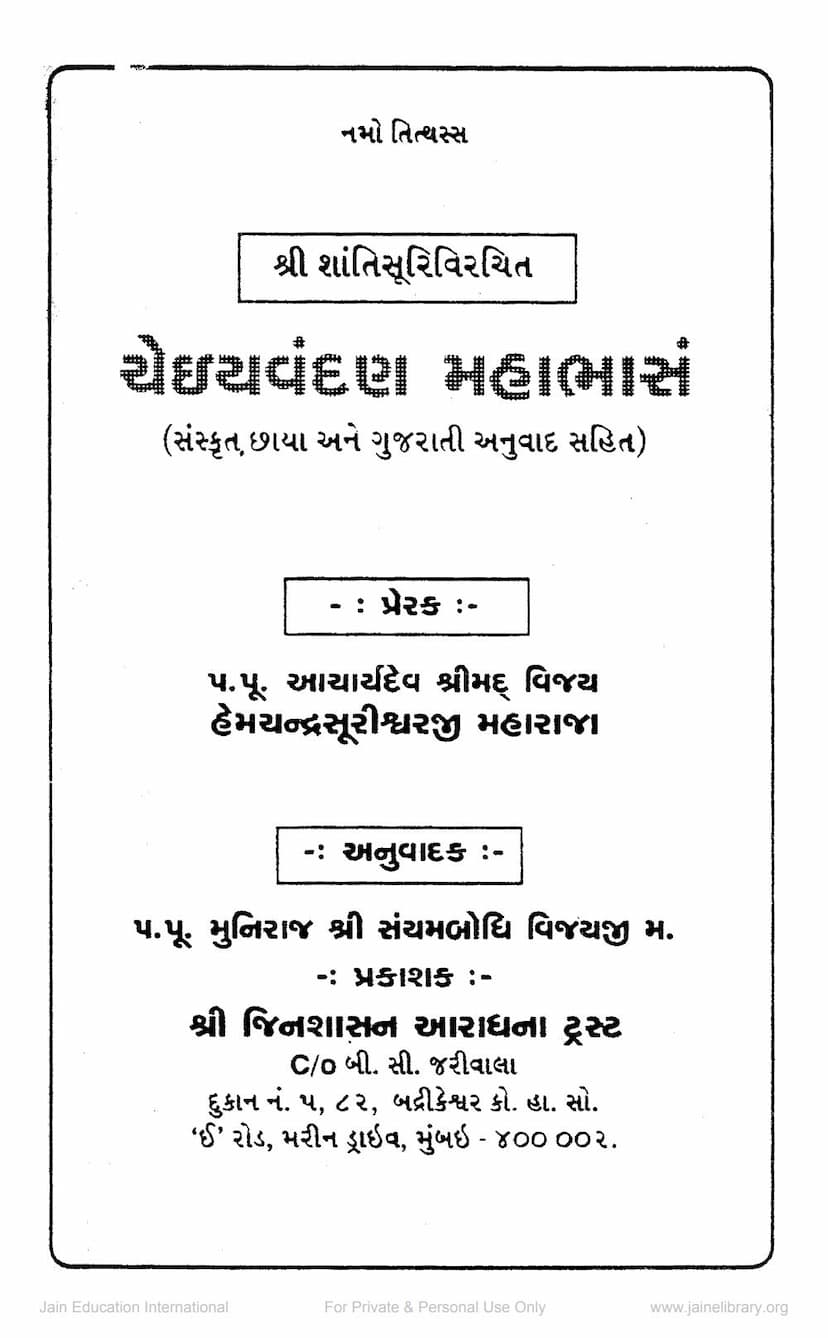Cheiavandana Mahabhasam
Added to library: September 1, 2025

Summary
This Jain text, "Cheiavandana Mahabhasam" (Chetiyavandana Mahabhashya) by Shantisuri, translated into Gujarati by Muniraj Shanchambodhi Vijayji and published by Shri Jinshasan Aradhana Trust, is a comprehensive commentary on the Jain practice of Chaityavandan (veneration of Jina images or temples).
The text emphasizes the importance of Chaityavandan as a means of spiritual upliftment and achieving liberation. It argues that veneration of Arihants is central to spiritual growth, as their grace, influence, and commands pave the way for a soul's journey from the lowest realms to perfection. The author highlights that devotion to Arihants provides the strength to follow their teachings.
Key aspects covered in the text include:
- The foundational role of Chaityavandan: It is described as the root of the tree of Dharma and the foundation of the palace of Dharma.
- The essence of Vandana: It signifies the mind turning towards the Paramatma (Supreme Soul), being attracted to their virtues, becoming one with them, and developing deep affection, akin to a fish's inseparable love for water.
- The importance of remembering the infinite virtues and boundless grace of the Paramatmas to foster this divine love and detach from worldly attachments.
- The contrast with selfish practitioners: The text contrasts the selfless devotion of Ganadharas and Acharyas with those who use devotion as a means for material gain.
- The prescribed method of Chaityavandan: It stresses the need for performing Chaityavandan according to prescribed rituals and traditions, just as even simple actions like wearing footwear have protocols.
- The significance of Jin-bimba (Jina images): The text discusses the concept of installing Jina images in Jin-chaityas, the meaning behind the stipulated numbers, and the reason for special veneration of the Mulnayak (primary) Prabhu.
- Addressing common queries and debates: It delves into various nuances, such as the correct way of performing rituals, the meaning behind different numbers of Jina images, the reasoning behind certain practices, and refutes misconceptions.
- The philosophical depth: The commentary is rich with scriptural references and philosophical explanations, revealing the deep secrets of the scriptures in a simple manner. It discusses topics like the importance of faith, the nature of different types of Vandan, the significance of the postures and rituals, and the underlying spiritual intent.
- The commentary's unique contribution: It clarifies many practices that are not found in other scriptures, making complex scriptural concepts accessible.
- The structure of the text: The book is presented with the original Sanskrit text, its transliteration, and a Gujarati translation, making it accessible to a wider audience.
The preface and subsequent sections detail the inspiration behind the translation, the acknowledgments to various individuals and institutions, and the overall purpose of publishing this work to spread the knowledge and practice of Chaityavandan. The text also meticulously breaks down the meaning of the vows, rituals, and the philosophical underpinnings of each aspect of Jain worship, aiming to guide both ascetics and lay followers towards a deeper and more meaningful spiritual practice.